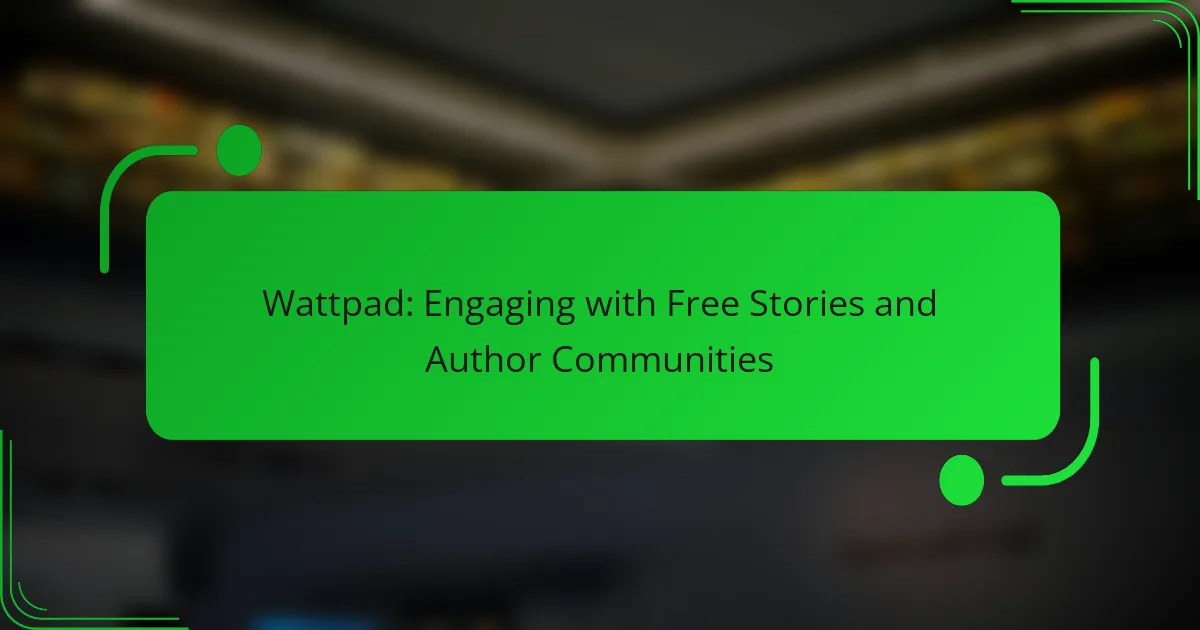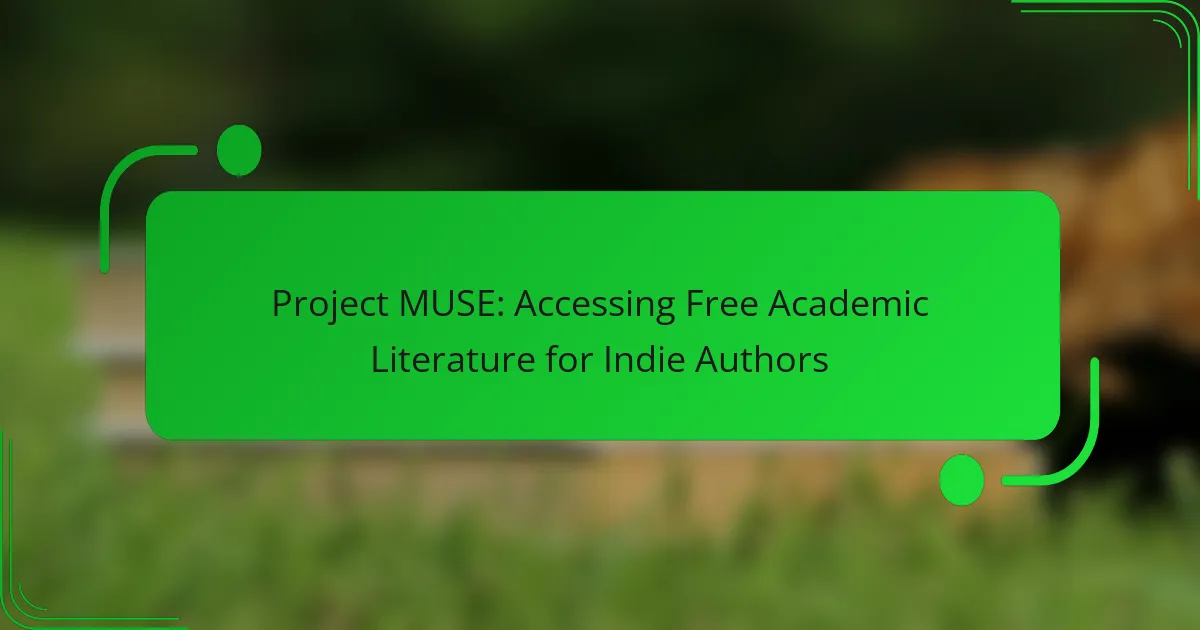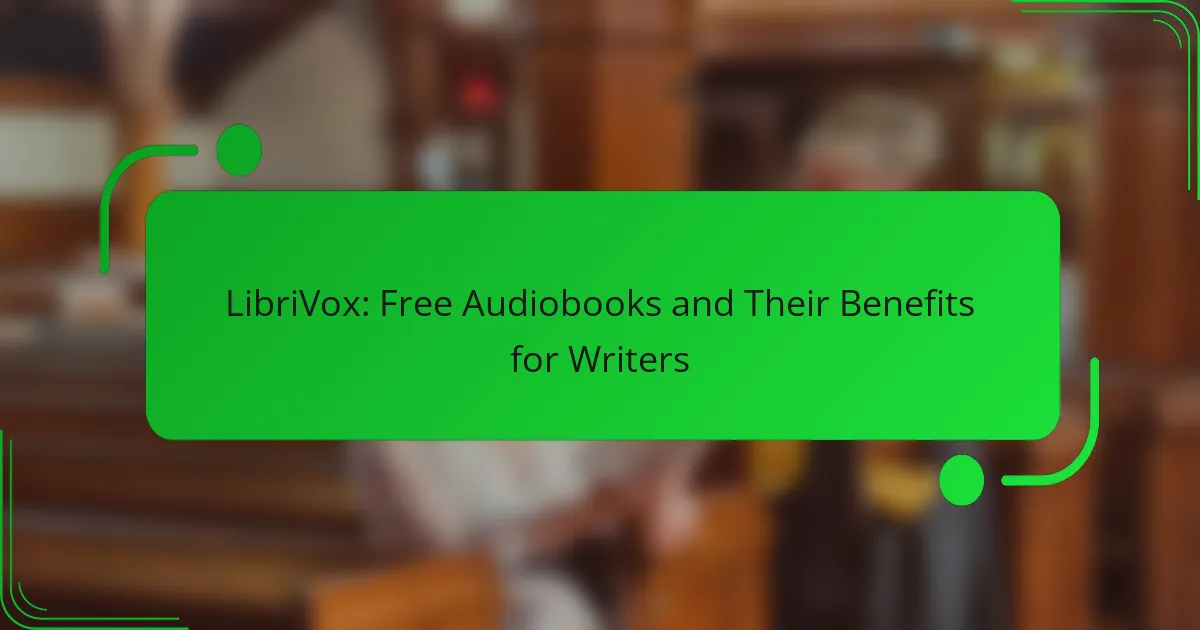Accessing a wealth of knowledge is crucial for researchers and students alike. The Internet Archive offers free access to millions of books and resources, supporting scholarly research and learning. This article explores the Archive’s extensive collection, innovative projects like the Wayback Machine, and best practices for navigating its vast database. Additionally, it highlights the importance of open access and cultural localization in enhancing user experience.

How does the Internet Archive provide free access to millions of books and resources?
The Internet Archive provides free access to millions of books and resources through its vast digital library. It offers over 20 million freely accessible books, texts, and multimedia resources, ensuring users can explore a wide range of topics. The Archive operates on a non-profit model, relying on donations and grants to maintain its extensive collection. Users can access materials in various formats, including eBooks, audio, and video, making it a versatile platform for research and learning. The Internet Archive’s mission is to provide universal access to all knowledge, exemplified by its commitment to preserving digital content for future generations.
What types of materials can be accessed through the Internet Archive?
The Internet Archive provides access to a wide variety of materials, including millions of books, texts, audio recordings, videos, and archived web pages. Users can explore digital formats of classic literature, academic papers, music collections, films, and much more. This extensive repository supports research, education, and entertainment. Notably, the Internet Archive also features unique collections, such as historical documents and rare publications, enhancing its value as a resource for diverse audiences.
How does the Internet Archive categorize its collections?
The Internet Archive categorizes its collections into various formats and subjects for easy access. Collections include texts, audio, video, images, and software, allowing users to explore diverse resources. Each category contains unique attributes, such as the availability of millions of books and archived web pages. The organization employs a systematic approach to ensure users can efficiently locate desired materials.
What are the main features of the Internet Archive’s user interface?
The Internet Archive’s user interface features a user-friendly design, extensive search capabilities, and easy access to a vast collection of digital resources. Key attributes include an advanced search bar, filters for specific content types, and a visually appealing layout that enhances navigation. Users can browse millions of books, audio files, and videos seamlessly, making research and exploration efficient. The interface also supports various formats, ensuring accessibility for diverse user needs.
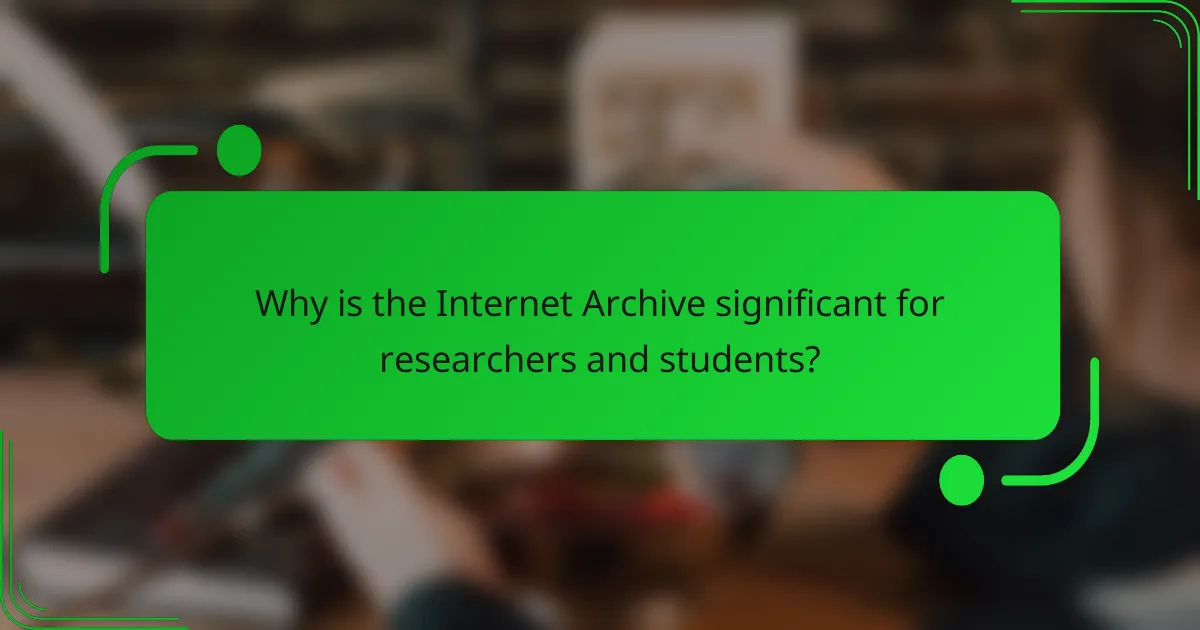
Why is the Internet Archive significant for researchers and students?
The Internet Archive is significant for researchers and students because it offers free access to a vast collection of books, articles, and multimedia resources. This digital library supports scholarly research and learning by preserving historical content and providing materials that might otherwise be inaccessible.
With over 40 million books and texts, it serves as a crucial resource for academic work. The Internet Archive’s unique attribute is its Wayback Machine, which allows users to view archived versions of web pages, facilitating research into the evolution of online information. Additionally, the platform promotes open access, aligning with the growing movement for free educational resources.
As a result, the Internet Archive enhances the educational experience, democratizing access to knowledge and supporting lifelong learning for individuals worldwide.
How does the Internet Archive support academic research?
The Internet Archive supports academic research by providing free access to millions of books, articles, and other resources. This extensive digital library enables researchers to explore diverse topics, enhancing their studies with historical and contemporary materials. The Internet Archive’s unique attribute is its Wayback Machine, which allows users to view archived versions of web pages, preserving valuable online content. Additionally, the platform offers various formats, including text, audio, and video, catering to different research needs. As a result, academics can conduct thorough literature reviews and access primary sources that may not be available elsewhere.
What unique resources are available for educators on the Internet Archive?
The Internet Archive offers unique resources for educators, including access to millions of free books, educational videos, and archival materials. Notable features include the Wayback Machine, which allows educators to explore past versions of websites, and a vast collection of open educational resources. The archive also supports various formats, including audiobooks and interactive media, enhancing the teaching experience. Additionally, educators can utilize tools for creating and sharing their own collections, fostering collaboration and innovation in learning.
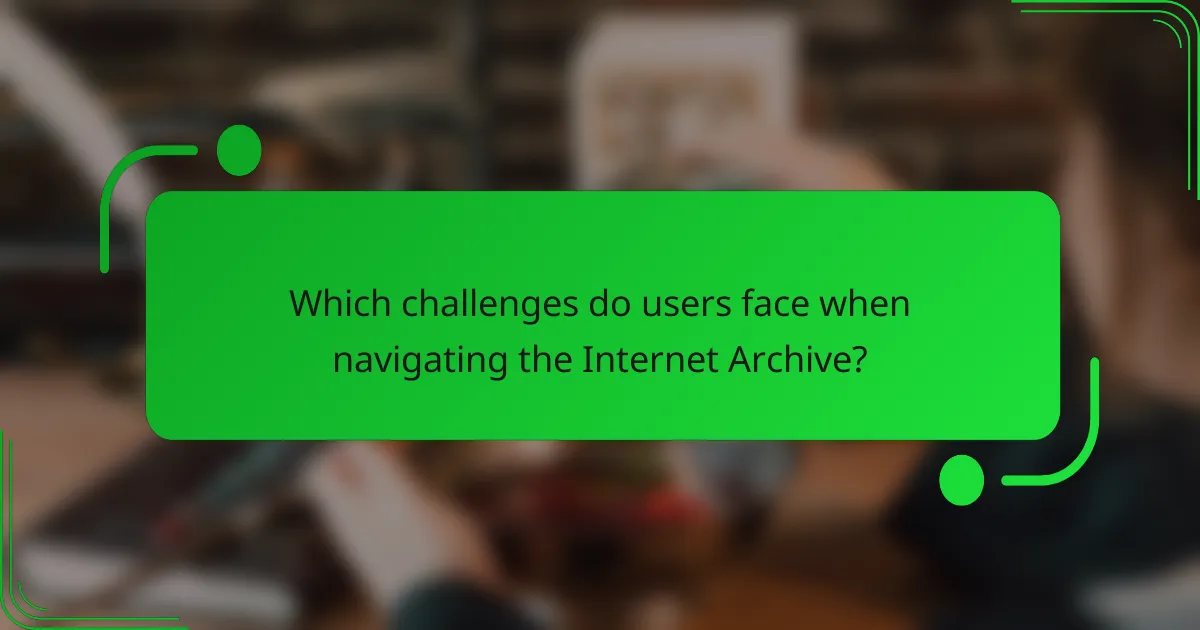
Which challenges do users face when navigating the Internet Archive?
Users face challenges such as navigating a vast collection, finding specific items, and understanding copyright restrictions. The Internet Archive offers millions of resources, but its extensive database can overwhelm users. Search functionality may yield irrelevant results, making it difficult to locate desired content. Additionally, some materials may have limited access due to copyright, complicating user experience.
What common issues arise for users in different regions?
Users in different regions face issues like limited access, varying internet speeds, and regional copyright restrictions. These factors impact the usability of the Internet Archive. For example, users in countries with strict internet regulations may struggle to access certain resources. Additionally, slower connection speeds can hinder the downloading of large files, affecting user experience.
How can users overcome limitations in accessing materials?
Users can overcome limitations in accessing materials by utilizing the Internet Archive’s extensive collection. The Internet Archive offers free access to millions of books, articles, and multimedia resources. Users can create an account to borrow digital materials, enabling them to access content that may be unavailable elsewhere. Additionally, the platform supports various formats, including eBooks and audiobooks, accommodating different preferences. By leveraging these resources, users can enhance their learning and research experiences significantly.
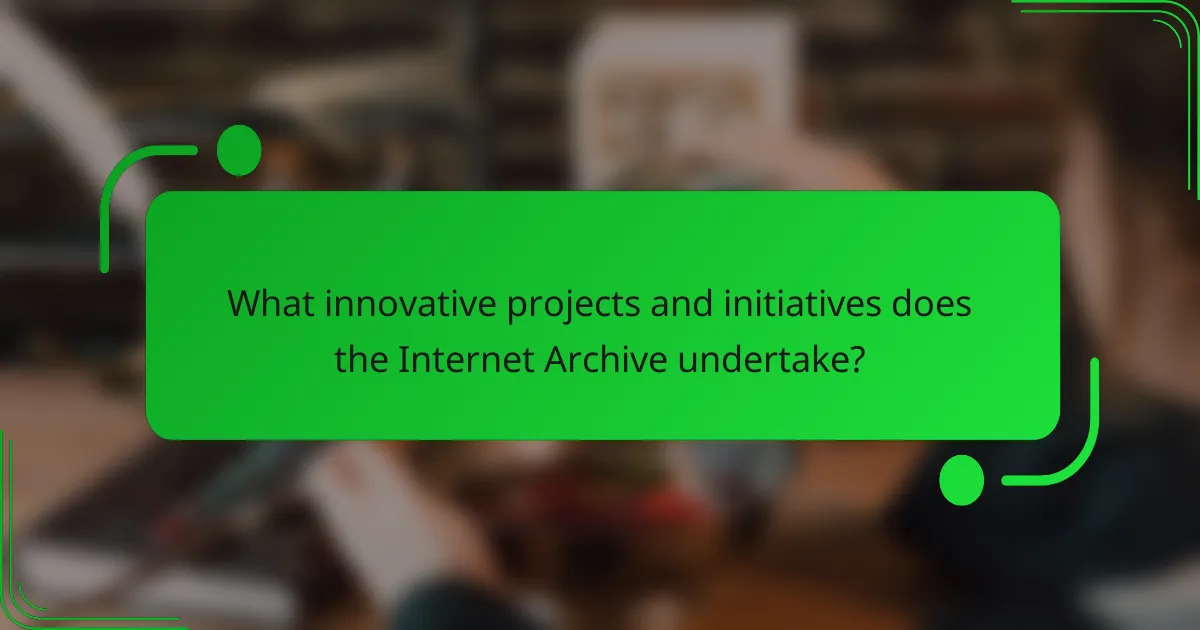
What innovative projects and initiatives does the Internet Archive undertake?
The Internet Archive undertakes innovative projects like digitizing books, preserving web pages, and providing access to multimedia. These initiatives aim to ensure free access to knowledge and cultural heritage. The Wayback Machine, for instance, allows users to view archived versions of websites, preserving digital history. Additionally, the Internet Archive collaborates with libraries to expand its collection, offering millions of books and resources for educational purposes.
How does the Internet Archive contribute to digital preservation?
The Internet Archive plays a crucial role in digital preservation by providing free access to a vast collection of books and resources. It captures and stores digital content, ensuring long-term availability and protection against loss. The Archive’s Wayback Machine allows users to view archived versions of web pages, preserving the history of the internet. This commitment to safeguarding knowledge supports educational initiatives and promotes cultural heritage. Additionally, the Internet Archive collaborates with libraries and institutions to digitize and preserve physical media, expanding its repository of accessible information.
Which partnerships enhance the Internet Archive’s offerings?
The Internet Archive enhances its offerings through partnerships with libraries, universities, and cultural institutions. These collaborations expand access to diverse collections and resources. Notable partnerships include those with the Library of Congress and various university archives, which enrich the digital repository. Additionally, collaborations with organizations like the Open Library promote the sharing of millions of books, ensuring free access to knowledge.
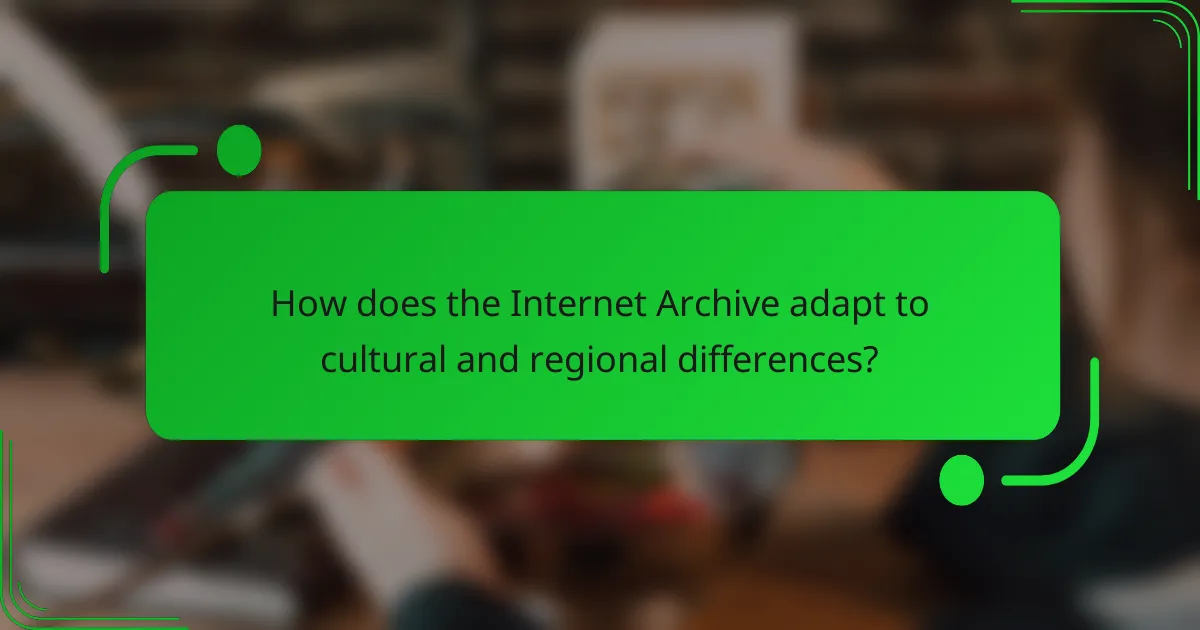
How does the Internet Archive adapt to cultural and regional differences?
The Internet Archive adapts to cultural and regional differences by localizing content and providing diverse language options. It collaborates with various organizations to curate region-specific collections. This ensures accessibility to a wider audience and respects cultural sensitivities. The Archive also employs technology to optimize resources for different internet speeds and device capabilities, enhancing user experience globally.
What specific resources are tailored for users in different languages?
The Internet Archive offers resources in multiple languages, including translated texts and language-specific collections. Users can access a vast array of books, audio, and video materials tailored to their linguistic needs. Key resources include multilingual interfaces and curated collections that enhance accessibility for non-English speakers. The platform supports various languages, ensuring a diverse range of content for global users.
How does the Internet Archive engage with local communities?
The Internet Archive actively engages with local communities by providing free access to resources, organizing events, and collaborating with libraries. It fosters educational initiatives that promote digital literacy and preservation. For example, the Archive hosts local workshops that teach community members how to utilize its vast collection effectively. Additionally, it partners with schools to enhance curriculum resources, ensuring students can access a wealth of knowledge. These efforts demonstrate the Archive’s commitment to empowering communities through information sharing and access.
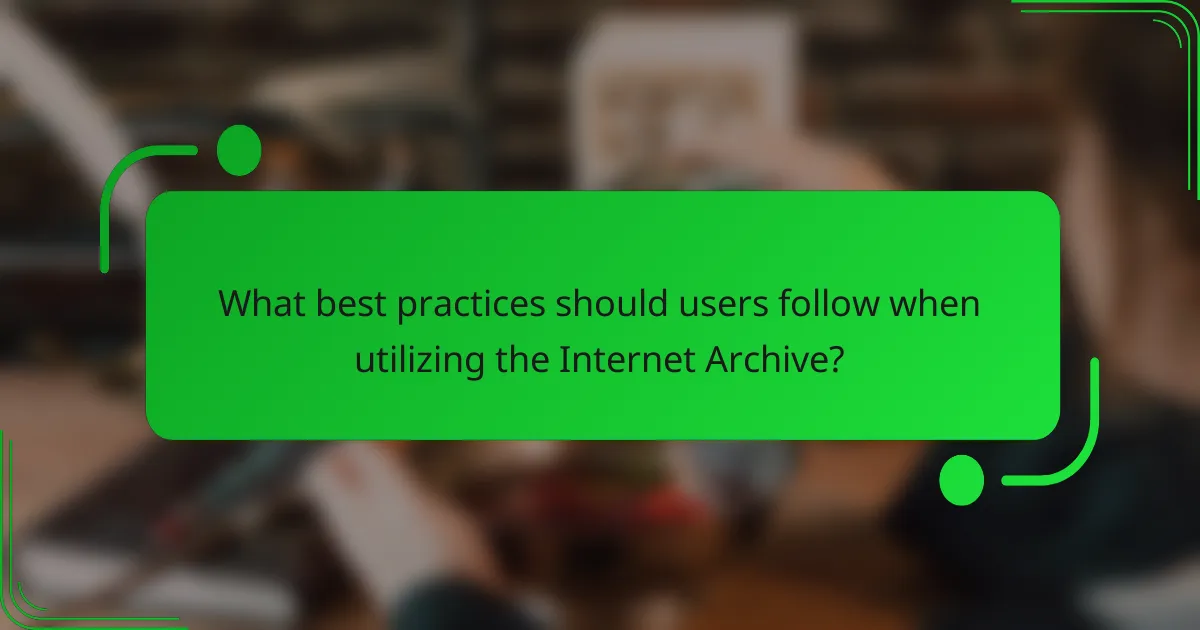
What best practices should users follow when utilizing the Internet Archive?
To effectively utilize the Internet Archive, users should follow best practices that enhance their experience. First, familiarize yourself with the search functionality to locate specific resources quickly. Utilize advanced search options to filter results by media type, year, and more.
Second, create an account to access additional features, such as borrowing books and saving favorites. This also allows users to contribute to the Archive by uploading their own materials.
Third, respect copyright laws by checking the usage rights of the materials accessed. Many resources are in the public domain, but some may have restrictions.
Lastly, engage with the community by participating in discussions or contributing to projects, as this fosters a collaborative environment for knowledge sharing.
How can users effectively search for materials on the Internet Archive?
To effectively search for materials on the Internet Archive, users should utilize specific keywords and filters. Start by entering relevant terms in the search bar. Use advanced search options to refine results by media type, date, or collection. Explore featured collections for curated content. Familiarize with the browsing categories for easier navigation.
What tips can enhance the user experience on the Internet Archive?
To enhance the user experience on the Internet Archive, utilize advanced search features, explore curated collections, and engage with community forums. These strategies help in discovering relevant resources efficiently.
1. Use the advanced search options to filter results by media type, date, or collection.
2. Browse curated collections that highlight significant works or themes.
3. Participate in community forums for tips and insights from other users.
4. Save favorite items to your personal library for quick access later.
